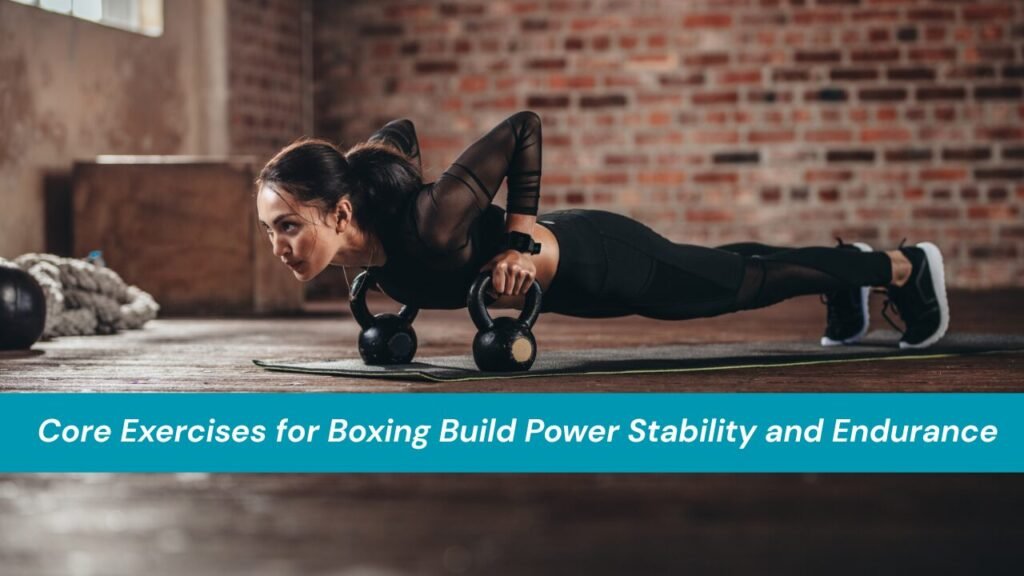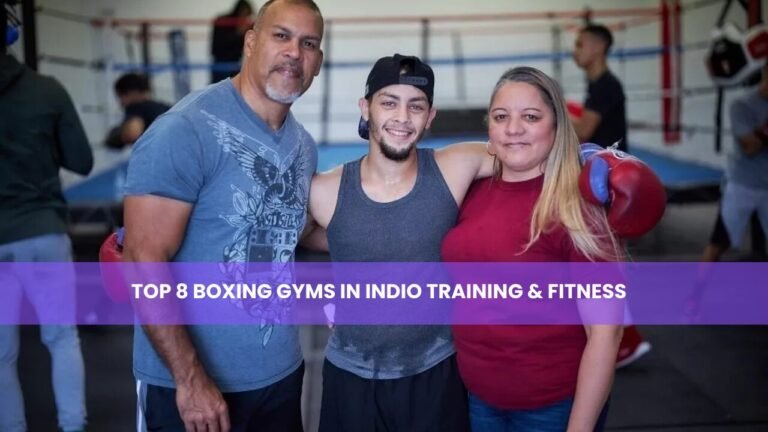A strong core in boxing goes beyond visible abs. It’s the engine room behind every punch, pivot, and dodge. A well-developed core enhances your ability to stay balanced, rotate powerfully, and avoid injuries making it a vital focus for any serious boxer.
This guide dives into the best core exercises for boxing and explains how each one improves performance in the ring. You’ll also learn how to integrate them into your routine for long-term results.
Why Core Strength Matters in Boxing
In boxing, your core is responsible for transferring force from the ground up through your body. Every punch starts with a movement in the hips or legs, and without a strong core, that energy won’t make it to your fists efficiently.
Whether you’re throwing a jab, recovering from a slip, or absorbing a punch to the body, your core muscles are constantly working. Improved core strength means more power, greater endurance, better balance, and fewer injuries.
Core Muscles Used in Boxing
The core isn’t just your abs it’s a complex network of muscles working together. Your rectus abdominis, obliques, transverse abdominis, erector spinae, and hip muscles all play a part in boxing performance.
Targeting all these muscles ensures you’re not only building strength but also creating a body that can move, twist, and react under pressure. This full engagement is what leads to explosive punches and quick footwork.
Russian Twists
Russian twists are excellent for building rotational strength, which is key in delivering powerful hooks and uppercuts. This exercise challenges your obliques and teaches your body how to rotate forcefully while staying balanced.
Adding resistance like a medicine ball can intensify the movement, helping simulate the torque used in punch combinations. This move builds both strength and control where it matters most.
Plank Variations
Planks are a staple of core training, offering endurance and static strength. When you hold a plank, you engage your entire core while also stabilizing the spine and hips.
Including variations like side planks or shoulder taps makes this exercise even more beneficial for fighters. These tweaks challenge your core in different directions, mimicking the need for multidirectional stability during boxing.
Hanging Leg Raises
Hanging leg raises work the lower abs and hip flexors—two muscle groups often underused in traditional ab exercises. This movement is especially valuable for fighters who rely on high guards and slipping techniques.
Keeping your legs straight while raising them teaches both strength and control. When done correctly, it strengthens your midsection and reinforces proper form under tension.
Medicine Ball Rotational Throws
This exercise directly translates to punching mechanics. By using a medicine ball and rotating explosively, you simulate the power required for crosses and hooks.
The movement activates your core and hips, which are crucial for generating speed and impact. Medicine ball throws are often used by elite athletes to sharpen their rotational power and improve timing.
Bicycle Crunches
Bicycle crunches combine abdominal strength with a cardio element. The alternating motion targets the rectus abdominis and obliques, training your core in a fluid, boxing-like rhythm.
It’s not just about strength it’s about sustaining movement under fatigue. Bicycle crunches improve muscle endurance, which is essential for maintaining form during long rounds.
Ab Rollouts
Ab rollouts are among the most challenging core exercises. They engage the entire abdominal wall and emphasize control, particularly through the transverse abdominis.
This move forces your body to resist collapse as you extend, which builds exceptional core strength. When you return to a standing or kneeling position, you reinforce control that directly benefits your boxing technique.
Dead Bug
The dead bug teaches proper core bracing while moving your limbs, mimicking the complexity of real boxing movements. It’s a fundamental drill for learning how to stabilize under dynamic conditions.
By keeping your back flat and alternating arms and legs, you build the neuromuscular connection needed to maintain control during offense and defense. This subtle yet powerful movement supports functional athletic performance.
Standing Woodchoppers
Woodchoppers replicate the motion of throwing punches, especially those that involve rotation like uppercuts or body shots. They activate the obliques and train your body to work through diagonal planes.
Using resistance from a cable machine or band adds intensity and helps develop power through controlled movement. This is a functional exercise that complements the demands of real in-ring action.
Stability Ball Stir-the-Pot
This exercise challenges your stability and forces you to engage multiple core muscles at once. By making small circular motions on a stability ball, you build isometric strength and balance.
It simulates the need for control during dynamic footwork and defensive movements. Boxers benefit from the enhanced proprioception and endurance that comes with this drill.
Reverse Crunches
Reverse crunches target the lower part of your abs, which are often overlooked. They complement the high-level strength gained from leg raises or planks.
This movement also strengthens your pelvic control, which plays a role in maintaining posture and core integrity during combinations. It’s a simple yet effective addition to any boxer’s routine.
Sample Core Workout for Boxers (At-Home or Gym)
A focused core workout can be done with minimal equipment and space. Combining exercises like Russian twists, planks, and reverse crunches in a circuit keeps the session intense and efficient.
Whether you’re training at home or in a gym, repeat the circuit three times with short rest intervals. A jump rope warm-up and dynamic stretches help prepare your body, while a proper cooldown ensures recovery.
Integrating Core Work into a Boxer’s Weekly Plan
Core training isn’t something to leave to chance. It should be built into your weekly schedule alongside sparring, strength work, and technique drills.
Some days might focus on isometric control with planks or stability ball drills. Others may include high-powered rotational exercises like medicine ball throws. The key is balance, variety, and consistency.
Real-World Example: Core Training in Professional Boxing
Professional fighters like Vasiliy Lomachenko and Canelo Alvarez prioritize core training. Lomachenko incorporates coordination-based drills that challenge his balance and reflexes. Canelo uses med ball throws and leg raises to generate speed and punching power.
Strength coach Tony Ricci, who works with elite fighters, often uses rotational and isometric core work to simulate in-ring demands. These examples show how targeted core training leads to real-world results in competition.
Common Mistakes to Avoid
One of the biggest mistakes boxers make is neglecting their lower back. Core training isn’t just about abs your posterior chain needs equal attention to avoid imbalances and injury.
Overtraining is another issue. Core muscles require recovery just like any other muscle group. Prioritize quality over quantity and avoid relying solely on crunches. Breathing is also often overlooked; exhaling properly during bracing can boost your strength output.
FAQs
What is the best core exercise for boxing?
There is no single “best” exercise, but medicine ball rotational throws and planks are highly effective due to their focus on power and stability.
Can I train my core every day?
You can do light core work daily, but intense training should be limited to 3–4 times per week to allow recovery.
Do core exercises improve punching power?
Yes, especially rotational movements like Russian twists and med ball throws, which replicate punching mechanics.
How long should a core workout be?
10–20 minutes is ideal if done consistently and with focus.
Are core exercises enough for a strong midsection?
Core work should be combined with full-body strength training, cardio, and proper nutrition for the best results.
Do professional boxers focus on core training?
Absolutely. Core training is integral to the conditioning routines of most professional fighters. It enhances both performance and injury resistance.
Conclusion
In boxing, a powerful and stable core can be the deciding factor between a win or a loss. Incorporate these core exercises for boxing into your regular training routine to improve punching power, prevent injuries, and build a stronger, more resilient body. Whether you train at home or in a gym, consistency is key. Integrate various core movements, track your progress, and adjust based on your performance goals.
Start with 2-3 core workouts a week, build intensity gradually, and focus on both quality and variety of movements. Over time, you’ll notice better control, explosive punches, and improved ring performance.
For more functional boxing workouts and performance insights, Visit boxing essential to explore more.




